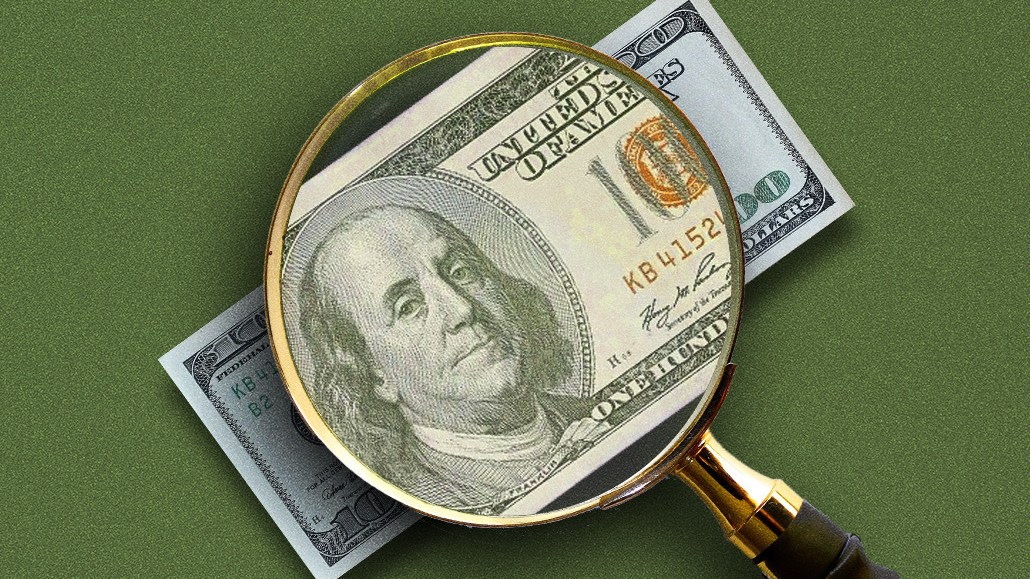
Ivy Liu
Next year’s ad spending forecasts echo a familiar story: growth, but with a slower tempo.
It’s an outlook that has come to define the post-pandemic ad economy, a far cry from the boom days when spending surged on the back of unexpected, chaotic tailwinds.
How much this slowdown bites depends on the source, but one thing is clear: while 2025 shows potential for another solid year in ad spending, optimism should be tempered by a mix of slowing growth, regional disparities and uncertainty surrounding the return of a Trump administration in the U.S.
According to industry doyen Brian Wieser, media analyst and author of the Madison and Wall newsletter, digital ad spending excluding political dollars is set to grow 8.4% next year — a noticeable drop from the 14.3% growth expected in 2024.
Given that those digital ad dollars account for a hefty 72.9% of total ad spend in 2025, according to GroupM, it’s not surprising that overall growth is following a similar trajectory. Total industry revenue (excluding political ad dollars) is expected to rise 7.7% to $1.1 trillion in 2025, down from the 9.5% increase forecast for this year. Slower, but still substantial.
Dentsu’s forecast is even more subdued, predicting ad spend growth of just 5.9% in 2025 — still outpacing the global economy by 2.7%, but a clear signal of caution.
The reality is that mid, single digit growth is back — a throwback to the steady pace that defined the mid-2000s. After a whirlwind few years, the ad market seems to have settled into a rhythm that’s more predictable, if less exhilarating.
Europe is no exception. The IAB Europe forecasts ad spending in the region will grow 6.1% next year, down sharply from the 10% growth expected in 2024. But it’s not the region’s muted GDP that’s holding ad spending back — it’s the imbalance in creative destruction. The churn of new businesses replacing old ones, a vital engine of economic dynamism and therefore ad spending, has faltered, leaving the ad market in Europe stuck in a holding pattern.
“We’ve seen a slowdown in growth,” said the trade body’s chief economist Daniel Knapp. “Despite an economic recovery in 2024, this is not translating into an acceleration of advertising growth in 2025… in some countries, we’re going into mid, or even probably low single-digit growth, probably lower than we have had before with the exception of 2009.”
Still, slower growth isn’t necessarily a cause for concern. It’s a natural sign of maturity, and digits advertising reaches that milestone years ago.
“I’m a realist… the exorbitant growth phases are behind us,” Knapp said when quizzed on his optimism for the sector’s 2025 outlook while comparing it to the “Covid bonanza” of 2021 when digital advertising saw a “30% year-on-year growth in investment.”
That pragmatism seems to be shared by CMOs of the world’s largest advertisers. According to a poll by the World Federation Advertisers and Ebiquity, half of the 136 senior marketers surveyed plan to increase their ad budgets in 2025, particularly in Europe, the Middle East and Africa (EMEA). North America, however, is expected to proceed with more caution, reflecting both regional and political uncertainties.
“Thus far, there’s modest projected 4Q spending growth year over year outside political. It appears this will carry on Y/Y for 1Q 2025 based on early planning indications,” said April Weeks, chief investment and media officer at Basis Technologies. “However, many of our clients are still finalizing 2025 budgets and the full picture is not yet determined.”
But even these projections are far from guaranteed
Ad spending could fluctuate significantly — up or down — depending on key factors.
Retail and commerce media, for instance, might feel the pinch of trade policies under a Trump administration. New tariffs could disrupt cross-border activity, a crucial growth driver for e-commerce-based sellers of advertising, potentially stalling one of the sector’s fastest growing areas.
This uncertainty is reflected in GroupM’s muted forecast. Global retail media revenue is expected to reach $176.9 billion in 2025, surpassing total TV revenue (including streaming) for the first time and accounting for 15.9% of total ad spending. While retail media grew 18.2% in 2024, its growth rate is expected to slow to 9.1% annually on a compound basis, underscoring the sector’s shift to a more sustainable, but less explosive trajectory.
Social media isn’t immune either. If TikTok is banned in the U.S. or sold and rebranded, ad dollars would likely shift to other platforms with Meta, Snap and Alphabet poised to capture much of that reallocated spending.
As a result, Wieser predicted social media platforms will grow by just 5.4% in 2025 (excluding political ad dollars), a steep drop from the 16.7% total growth projected for 2024.
And the list goes on.
AI platforms are beginning to reshape the search ad market, streaming giants like Amazon have upended video ad pricing this year, and creators continue to redefine how marketers approach — and invest in — word-of-mouth marketing.
In short, while 2025 may offer a sense of stability, the market remains anything but stable.
“Looking ahead to Q1 2025, I think advertising budgets will stabilize,” said Josh Rosen, president of Hotspex Media, “There are the Australian Open and Winter X Games, but they don’t generally command the advertising budgets of events like the Olympics.”
https://digiday.com/?p=562565





